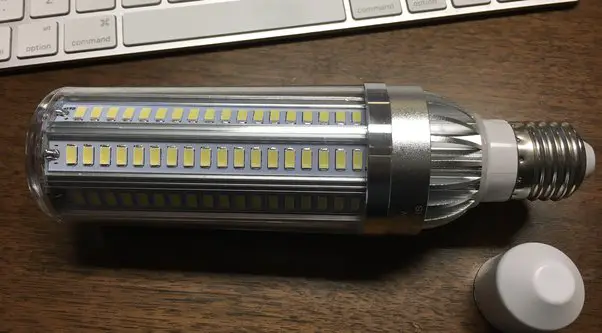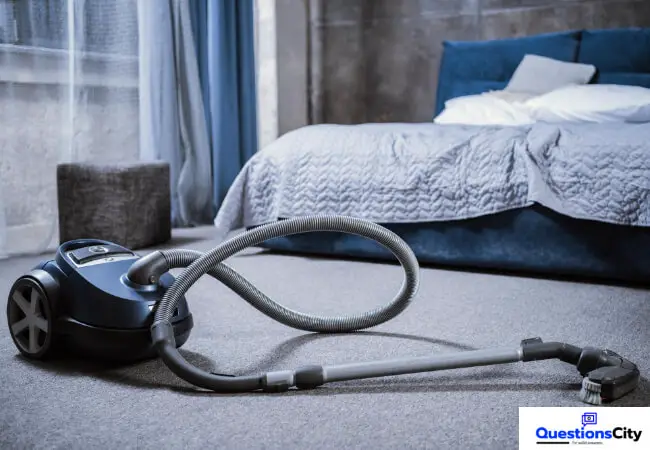Last Updated on July 8, 2023 by QCity Editorial Stuff
Well, you can use a 60-watt bulb in a 40-watt lamp but it is not recommended by the experts. You should keep in mind that when you use higher-wattage bulb then it will generate more heat than the lamp is designed to handle, which can lead to overheating and potentially cause the lamp to melt, crack, or catch fire.
Is it Possible to Use a 60 Watt Bulb in a 40 Watt Lamp?

Yes, it is possible to use a 60-watt bulb in a 40-watt lamp. However, using a higher wattage bulb than what is recommended for a lamp can pose safety concerns and risks. Here’s why:
- Heat Buildup: A 60-watt bulb produces more heat than a 40-watt bulb. This can lead to excessive heat buildup within the lamp, potentially causing the lamp or surrounding materials to overheat and become a fire hazard.
- Electrical Overload: The wiring and electrical components of a lamp are designed to handle the wattage specified for that lamp. Using a higher wattage bulb can put excessive strain on these components, increasing the risk of electrical overload and potential damage to the lamp or even electrical shock.
Potential consequences of using a higher wattage bulb
Using a higher wattage bulb in a lamp that is not designed for it may result in several consequences:
- Lamp Damage: The extra heat generated by the higher wattage bulb can cause the lamp’s socket, wiring, or other components to deteriorate or melt over time, reducing the lamp’s lifespan.
- Fire Hazard: Increased heat buildup can lead to materials near the lamp, such as lampshades, curtains, or other flammable objects, catching fire.
- Voiding Warranty: If you use a higher wattage bulb than what is recommended by the manufacturer, it may void the lamp’s warranty, leaving you responsible for any damage that occurs.
To ensure safety and prevent any potential hazards, it’s best to always use the appropriate wattage bulb as specified by the lamp manufacturer. Using a higher wattage bulb is not worth the risk, as it can compromise the safety of your home and potentially cause harm or damage.
What does wattage mean?
Wattage refers to the amount of power consumed by a light bulb and is commonly used to measure the brightness of a light source. It indicates the rate at which energy is being used or produced. In simpler terms, wattage tells us how much electrical power a bulb consumes to produce light. The higher the wattage, the brighter the light emitted by the bulb.
How does wattage affect the brightness of a bulb?
The wattage of a bulb directly impacts its brightness. Generally, a higher wattage bulb will produce more light than a lower wattage bulb. However, it’s important to note that wattage alone doesn’t determine the brightness of a bulb. The type of bulb, its design, and other factors can also affect the amount of light emitted. So, while wattage is a good indicator of brightness, it’s not the sole determining factor.
When it comes to fitting a 60-watt bulb in a 40-watt lamp, it’s generally safe to do so. The wattage rating refers to the maximum amount of power the lamp can handle without overheating. Since a 60-watt bulb is within the capacity of a 40-watt lamp, you can use it without any issues. However, the brightness of the light will be higher than what the lamp was originally designed for. So, it’s important to consider the desired brightness level and the heat generated by the bulb to ensure safe and proper usage.
Factors to Consider Before Using a Higher Wattage Bulb
While it may be tempting to use a higher wattage bulb in a lamp that is designed for a lower wattage, there are several factors to consider before doing so. Here are a few things to keep in mind:
- Lamp design and specifications
Before using a higher wattage bulb, it is important to check the lamp’s design and specifications. Some lamps are specifically designed to handle higher wattage bulbs, while others may not be able to withstand the increased heat generated by a higher wattage bulb. Checking the lamp’s labeling or consulting the manufacturer’s instructions can help determine the maximum wattage the lamp can safely handle.
- Heat generation and ventilation
Higher wattage bulbs generate more heat than lower wattage bulbs. If the lamp is not designed to dissipate this extra heat, it can pose a fire hazard. It is essential to ensure that the lamp has proper ventilation to prevent overheating. If the lamp has a shade, make sure it is not blocking the heat from escaping. Additionally, avoid using higher wattage bulbs in lamps with plastic or flammable components.
Alternatives to Using a Higher Wattage Bulb
- LED Bulbs: LED bulbs are known for their energy efficiency and can provide the same brightness as higher wattage incandescent bulbs while using significantly less power. Look for LED bulbs with a wattage equivalent to the desired brightness you want.
- CFL Bulbs: Compact fluorescent bulbs, or CFL bulbs, are another energy-efficient option. They use around 75% less energy than incandescent bulbs and produce less heat. CFL bulbs also come in various wattage options to suit your lighting needs.
- Halogen Bulbs: Halogen bulbs provide a bright and white light similar to incandescent bulbs but use less energy. They are available in lower wattages, making them suitable for lamps with lower wattage limits.
Conclusion
In conclusion, when it comes to using a 60 watt bulb in a 40 watt lamp, it is generally not recommended. While it may physically fit in the lamp socket and provide brighter light, it can pose several risks and hazards. So, it is always important to follow the manufacturer’s recommendations and adhere to the wattage limitations specified for your lamp.
References:
https://lightblinks.com/can-i-use-a-60-watt-bulb-in-a-40-watt-lamp-benefits-risks/
https://portablepowerguides.com/can-i-use-a-60-watt-bulb-in-a-40-watt-lamp/






